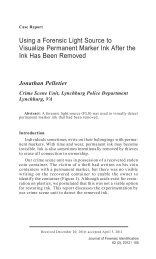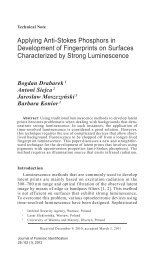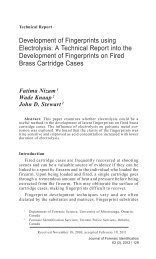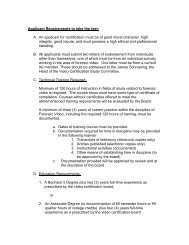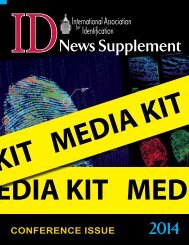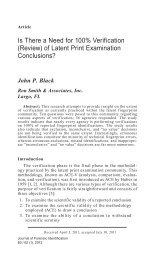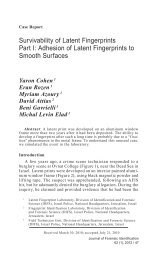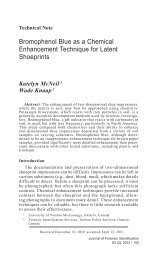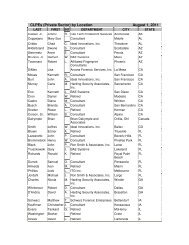Individualization Using Friction Skin Impressions: Scientifically ...
Individualization Using Friction Skin Impressions: Scientifically ...
Individualization Using Friction Skin Impressions: Scientifically ...
You also want an ePaper? Increase the reach of your titles
YUMPU automatically turns print PDFs into web optimized ePapers that Google loves.
of friction ridge skin examination as being unreliable and<br />
invalid as a means of personal identification [8, 34]. Following<br />
a thorough investigation of the incident by the United States<br />
Office of the Inspector General (OIG), it was later concluded<br />
that, among other contributing factors, the “misidentification<br />
could have been prevented through a more rigorous application<br />
of several principles of latent fingerprint identification”<br />
[33]. The incident was unfortunate, but a major contributing<br />
factor was the improper application of the science by those<br />
practitioners that resulted in the error.<br />
Now we are left with the argument often posed by critics<br />
that, regardless of whether errors occur because of the science<br />
or because of the improper application of the science, errors<br />
do occur and will continue to occur. This leads critics to the<br />
question of error rates. How often will errors occur in the<br />
future? How often have errors occurred in the past that have<br />
gone unnoticed [8, 10, 12–15, 34, 35]? Critics argue that there is<br />
no established rate of error for the science of friction ridge skin<br />
examination and often turn to using inappropriate measures of<br />
examiner reliability such as proficiency tests [36]. However, the<br />
Collaborative Testing Services, Inc. (CTS), which is a primary<br />
provider of proficiency testing in several forensic disciplines,<br />
released its “position on the unsuitability of our [its] reported<br />
results as a source for the determination of error rates for forensic<br />
science disciplines” in a statement published in March 2010<br />
[37]. Furthermore, according to the NRC, “Auditing and proficiency<br />
testing cannot be expected to give a meaningful estimate<br />
of the probability that a particular laboratory [or individual]<br />
has made such an error in a specific case. An unrealistically<br />
large number of proficiency tests would be needed to estimate<br />
accurately even a historical error rate.” [3] Additionally, as<br />
stated by the NRC in 1996:<br />
Estimating rates at which nonmatching samples are declared<br />
to match from historical performance on proficiency tests is<br />
almost certain to yield wrong values. . . . The risk of error<br />
is properly considered case by case, taking into account the<br />
record of the laboratory [or examiner] performing the tests,<br />
the extent of redundancy, and the overall quality of results.<br />
However, there is no need to debate differing estimates of<br />
false match error rates when the question of a possible false<br />
match can be put to direct test. [3]<br />
Journal of Forensic Identification<br />
62 (1), 2012 \ 71



